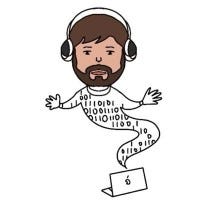
Featured Blog | This community-written post highlights the best of what the game industry has to offer. Read more like it on the Game Developer Blogs.
I have been a publisher of the Asset Store for 4 years and would like to share my experience. I’ll tell you all you need to know to create an asset from the point of view of a programmer.

I have been a publisher of the Asset Store for 4 years and would like to share my experience. I’ll tell you all you need to know to create an asset from the point of view of a programmer.
What is the Unity Asset Store?
This is a store where you can purchase assets for Unity such as 3D models, sounds / music, UI kits, shaders / particles, sprite kits, and tools. The Asset Store was created in 2010 and now it turned 10 years old! Almost every Unity project has assets, because they make the development process more comfortable and faster. If you have a desire, idea and experience with Unity, you can become a publisher and increase your passive (almost) income.
What do you need to create an asset?
Idea for a future asset. There are many sections in the Asset Store, so I recommend deciding on a topic first. There are few assets in the “Localization”, “Painting” and “Video” subcategories of the “Tools” section. You also need to check if there are any analogues of your future asset. If there are analogues, figure out how to make your asset better and cooler;
10+ hours of time to create, design and publish. Asset development can take a long time. It is important to understand whether you have enough perseverance and motivation to bring the matter to the end. Some assets took 2 days, but one I was doing for half a year and couple times I wanted to abandon everything and do something else;
Time to support and help customers.
Asset creation
So, you have chosen the theme and content of the asset, then you need to implement the idea.
There are a few things to keep in mind when creating an asset:
The product must compile on all platforms, have a working demo scene with a demonstration of all features, as well as documentation;
If your asset contains code, you need to test it on multiple platforms, ideally not only in the Unity editor or using emulators, but also on real devices;
The asset should be easy to use;
The product must have at least good performance.
Documentation
High-quality documentation is the key to satisfied customers. When users’ questions are repeated — this is a sign that some answers should be described in the documentation as simply and clearly as possible. If users don’t write to you with questions and give you 5 stars in reviews, the documentation is excellent.
Before publishing
You need to create an asset in the Asset Store publisher panel:

Further it is necessary:
Select an asset category;
Add description, tags, screenshots;
If it is possible, build a WebGL demo of your product. Attach a demo link to your description so potential users can try out the product before purchasing;
If your asset contains functionality that works on specific platforms, this must be indicated in the description. For example, if you use Compute Shaders, you must specify the requirements in the description, otherwise users may rate your asset with one star, which will negatively affect further sales;
Create graphics for the asset page and demo version. If you have the time, skills and taste, you can do it yourself. Experience shows that it is better to involve a 2D artist / designer. Well-designed asset is selling better;
Take screenshots;
Record and edit video. It can be a tutorial on how to work with your asset or a demonstration of its capabilities;
Set a price for the asset. Remember, Unity takes 30% of the sales;
Upload the asset from the Unity editor using the Asset Store Tools and submit it for review. As of April 1, 2020, the Asset Store requires Unity LTS Release 2018.4 or newer to be used to download new assets. I recommend using the oldest supported version of Unity to upload assets as this will increase the number of users who can purchase your product.
Previously, the publication and review of the asset took about 12–18 business days, the last half of the year takes 3–5 days.
An asset can be rejected for several reasons, the most common of which are:
— Low quality;
— Copyright infringement;
— Lack of documentation;
— Lack of demo scene.
If the asset is rejected, you can correct it according to the comments received, upload a new version and submit the asset for re-review. A second review usually takes 1–2 business days.
Asset published, what’s next?
Congratulations!
Now the asset can be promoted and for basic promotion I use:
As content for promotion, you can use the description of the asset and / or a demonstration of its features. In general, promotion is an optional thing. Some of the assets I didn’t posted anywhere, but people find and buy them, apparently tags in the store and Youtube play a big role here.
If you’ve published a paid asset, you need to support it.
Answer user questions. 90% of users write by email, some people use Unity Connect for communication, and some users write their questions directly under the video on Youtube, so I recommend turning on email notifications everywhere so as not to miss anything;
Bugfix — users can find a bug and write to you. You will need to figure it out, fix the bug and ask the user to check the fix, after publish the update;
Checking the asset on new versions of the Unity — at the release of each major version of Unity (2020.1, 2020.2, 2021.1, etc.), I recommend opening a project with your asset in the new Unity and making sure that it compiles on all supported platforms and works correctly;
Supporting existing functionality and adding new features — this way you can attract more users and reasonably raise the price of your asset, which in the long term can increase your income;
Analytics
The Asset Store offers to use Google Analytics. To do this, just specify the Tracking ID in the publisher’s console. So you will be able to understand — the geography of your customers, page visits per today, dynamics of visits, etc. Convenient and useful tool!
User reviews
Positive reviews are important for users looking to buy an asset. Even if you got an 1 star, do not despair, politely contact the user and express your desire to help in this situation. Ask user to report the problem in as much detail as possible and provide your contacts. Negative reviews need to be dealt with and ignoring them is the worst option. In case the user will write to you and you will able to help him, he probably will change the rating.
Withdraw funds
The Asset Store supports 2 payment methods:
PayPal — no minimum withdrawal amount, monthly payments;
Wire (bank transfer) — the minimum withdrawal amount is $250, payments once a quarter (April 15, July, October and January). All payments are made without commissions, but the intermediary bank and the receiving bank can charge their commission.
Pros and cons of the Asset Store
Pros
A huge number of assets for every taste and color, which allows you to make products faster and more convenient;
There is no need to promote assets. Searching the Asset Store works great, just specify the tags;
Creative freedom;
Passive income.
Cons
Assets in some categories are sold “per workplace” — 1 asset per 1 computer. The Asset Store don’t control this and large companies can buy only one copy of your asset and use it on 100 computers (as happened at least with one of my assets);
You can withdraw funds by bank transfer only once every 3 months;
No protection against piracy — the downloaded asset is stored in an archive with the .unitypackage extension and can be uploaded to a pirated site by an unscrupulous user;
The more an asset is bought, the more the Asset Store will promote it (posts in social networks, sales, display on the store’s home page). This is a kind of vicious circle in which the most popular assets become even more popular;
The Asset Store allows you to generate only 12 vouchers per year for all your assets.
Results
After publishing my debut asset, the Asset Store brought me $56 in the first month. And in six months I have already received $316.8. I had no expectations for the Asset Store and I’m quite happy with the result. Especially that it is passive income.

In 4 years I have published 14 assets that bring me good extra income. For the most part, this is my Pet-project, on which I work in my free time from my main work and get great pleasure from it.
The Asset Store is a great platform for Unity developers, here you can find the tool you need, as well as design, implement and publish your own.
If someone is engaged in similar creativity, write, I will be grateful for your comments and feedback!
Read more about:
Featured BlogsAbout the Author(s)
You May Also Like








